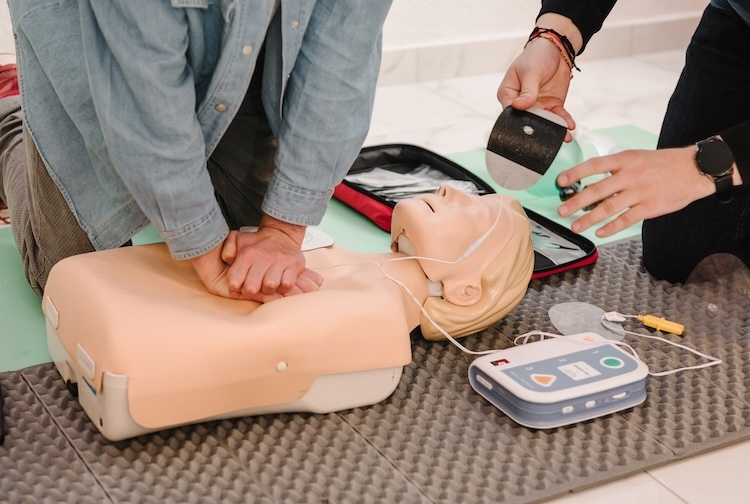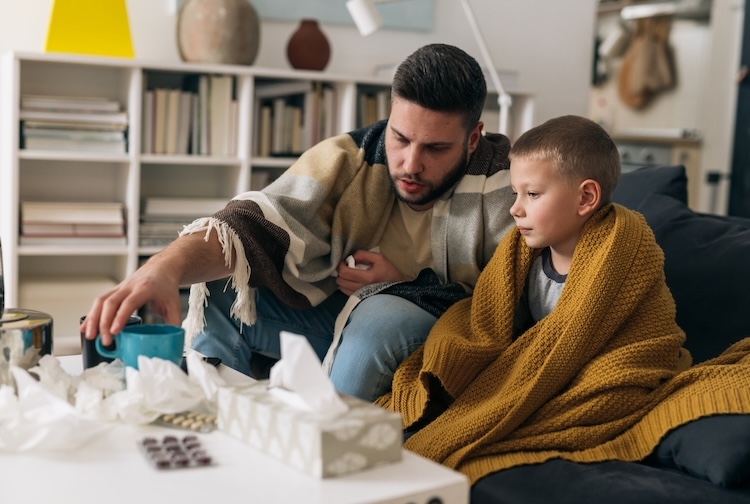How to save a life: CPR tips for heart emergencies
Even if your ‘technique isn’t perfect,’ VCU Health Pauley Heart Center expert says you can still save a life with CPR and an AED.
June 30, 2025 Studies show that performing CPR can double or triple the chances of survival for an individual experiencing a heart-related emergency. (Getty Images)
Studies show that performing CPR can double or triple the chances of survival for an individual experiencing a heart-related emergency. (Getty Images)
By Tanner Lambson
The reality is staggering.
Nearly 90% of cardiac arrests that happen outside of the hospital each year are deadly, according to the Sudden Cardiac Arrest Foundation.
However, chances for survival can go up significantly if a bystander does cardiopulmonary resuscitation (CPR) or uses an automated external defibrillator (AED).
That is why every second counts in a heart-related emergency.
Michelle Gossip, RN, cardiology program manager at the VCU Health Pauley Heart Center, knows this all too well. Aside from her work in the hospital, she has performed CPR on two people experiencing heart emergencies in the community.
“Even if you’re worried that your technique isn’t perfect or you’re anxious about touching a stranger, remember that any action is better than doing nothing,” Gossip said. “Even if you’re not 100% confident, your willingness to perform CPR can double or triple the chances of survival. Trust your training, your instincts and know that every life saved begins with someone stepping up in the moment.”
In a recent episode of Pauley’s Heart to Heart podcast, Gossip shared why it’s so important to know how to do CPR and use an AED when someone is having a cardiac emergency.
(VCU Health Pauley Heart Center and Enterprise Marketing and Communications)
What’s the difference between a heart attack and a cardiac arrest?
There’s a common mix-up between the two, but they’re quite different.
A heart attack happens when a coronary artery is narrowed or blocked, leading to chest pain along with symptoms like arm or jaw pain — you might even say there’s that “elephant on the chest” feeling.
In contrast, a cardiac arrest is when the heart simply stops beating. In that moment, the patient becomes unresponsive, often turns blue or gray, and stops breathing normally. Time is critical with a cardiac arrest — every second without intervention drastically reduces survival chances.
What exactly does CPR do?
CPR stands for cardiopulmonary resuscitation — that is, heart-lung resuscitation. When you perform CPR, you’re essentially mimicking the work of the heart. By using the surface underneath the patient and applying consistent, deep chest compressions, you “squeeze” the heart to help circulate oxygen-rich blood throughout the body. This manual pumping is vital until emergency services or advanced medical care can take over.
What is hands-only CPR?
We encourage hands-only CPR, especially for anyone who may feel unsure about breathing into someone’s mouth. Hands-only CPR drops the breathing component, so all you need to do is focus on delivering strong, uninterrupted chest compressions.
You will want to aim to compress the chest about one and a half to two inches deep at a rate of roughly 100 to 120 compressions per minute. I like to use songs such as “Stayin’ Alive” by the Bee Gees to help keep the beat. For those with children, less conventional tunes like “Baby Shark” might work too.
Studies show that even if you can’t recall the precise compression-to-breath ratio, especially since that knowledge may fade with time, even imperfect hands-only CPR can double or triple a person’s survival chance compared to doing nothing. It’s an approach that reduces hesitation and makes it easier for anyone to step in during a crisis.
What should I do if I encounter someone in cardiac arrest?
The moment you suspect cardiac arrest; quick action is imperative.
First, check for responsiveness. Gently tap the person while calling their name or nudge their cheek or shoulder if necessary.
Then, observe how they breathe. If they are unresponsive, appear blue or gray, and aren't breathing normally (sometimes only gasping sporadically), then you should call 911 immediately.
If you know that there is an AED nearby, grab it immediately — ideally within 15 seconds — without delaying CPR. If you’re in a group, delegate one person to retrieve the device while you start chest compressions.
If you are alone, put your cell phone on speaker mode while communicating with 911 dispatchers and begin chest compressions. Even if you feel like your technique isn’t perfect, doing something is far better than waiting.
What is an AED, and how does it assist during a cardiac emergency?
An AED, or automated external defibrillator, is a portable device designed to analyze the heart’s rhythm and deliver a shock if it detects a life-threatening arrhythmia. I’ve seen AEDs become more common in public spaces like grocery stores, schools and libraries.
When a person experiences cardiac arrest due to certain electrical disturbances, a properly administered shock from an AED can restart the heart. Essentially, the AED serves as a critical bridge — buying precious time by restoring a more normal rhythm before EMS arrives.
Do I need to be a health care professional to use an AED?
Not at all. One of the great things about today’s AEDs is their user-friendly design. They come with clear voice prompts, and any bystander — regardless of medical training — can and should use them when needed.
I encourage everyone to familiarize themselves with the location of AEDs in their workplace or community because having that information can be lifesaving during a cardiac emergency.
Read more heart health stories on the Pauley Heart Center Blog




